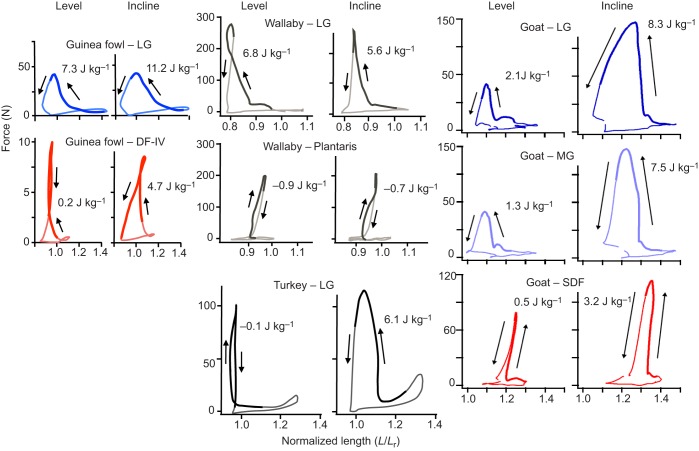Fig. 2.
Comparison of the in vivo force–length behavior and net work done by distal muscle–tendon units under level versus incline conditions. Recordings show muscle forces determined from tendon force measurements, along with normalized fascicle length changes (L/Lr) as determined via sonomicrometry. Data are drawn from the following sources: guinea fowl lateral gastrocnemius (LG) and digital flexor IV (DF-IV) running at 1.3 m s−1 (Daley and Biewener, 2003); wallaby LG and plantaris (PL) hopping at 4.5 m s−1 (Biewener et al., 2004); turkey LG running at 2.5 m s−1 (Biewener and Roberts, 2000; Roberts et al., 1997); and goat medial gastrocnemius (MG), LG, and superficial digital flexor (SDF) trotting at 2.5 m s−1 (McGuigan et al., 2009). Whereas the wallaby LG force–length patterns presented here show positive work during level and incline hopping, with 10–12% shortening strains during active force development, LG shortening strains recorded across four animals averaged −1.0±4.6% for level versus 0.6±4.5% for incline hopping, with net work averaging −8.4±8.4 J kg−1 for level versus −6.8±7.5 J kg−1 for incline hopping (Biewener et al., 2004).

